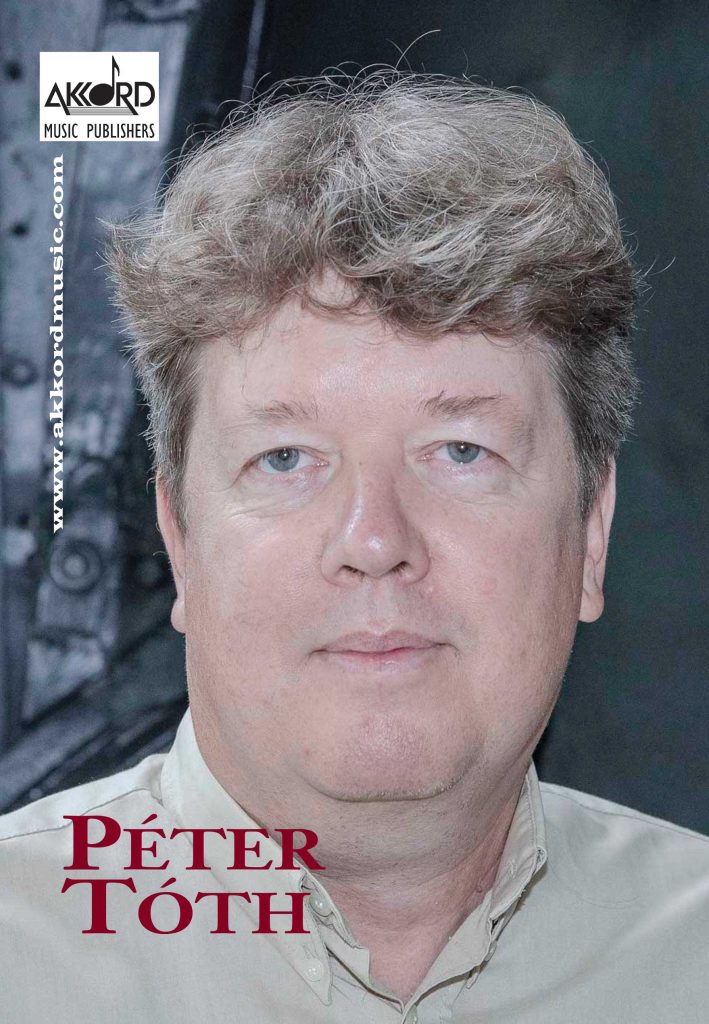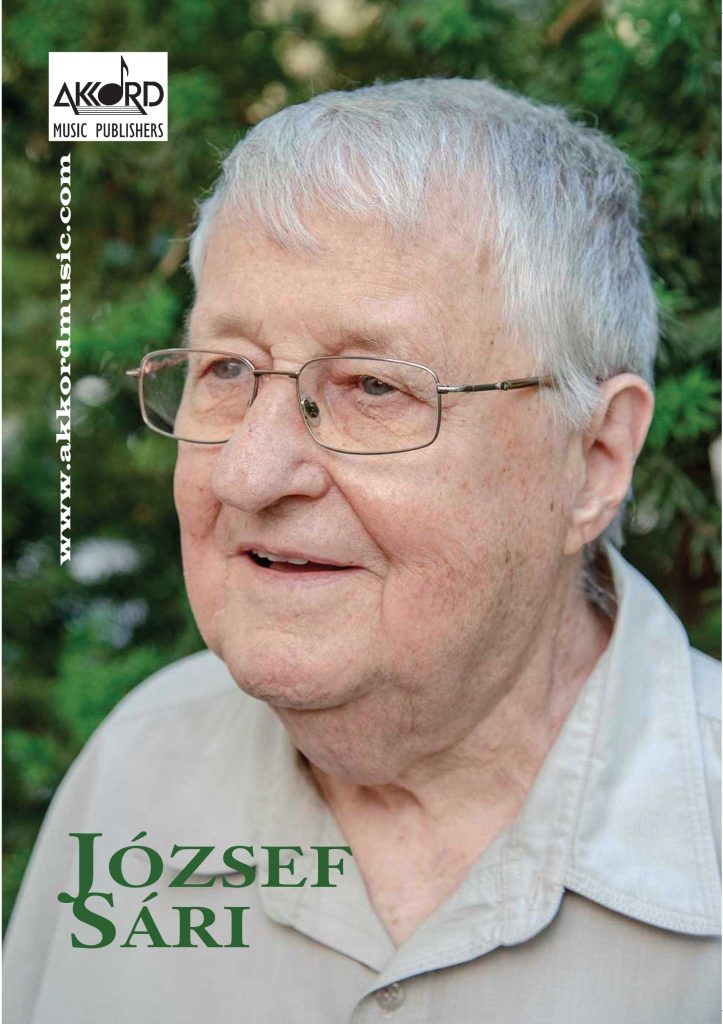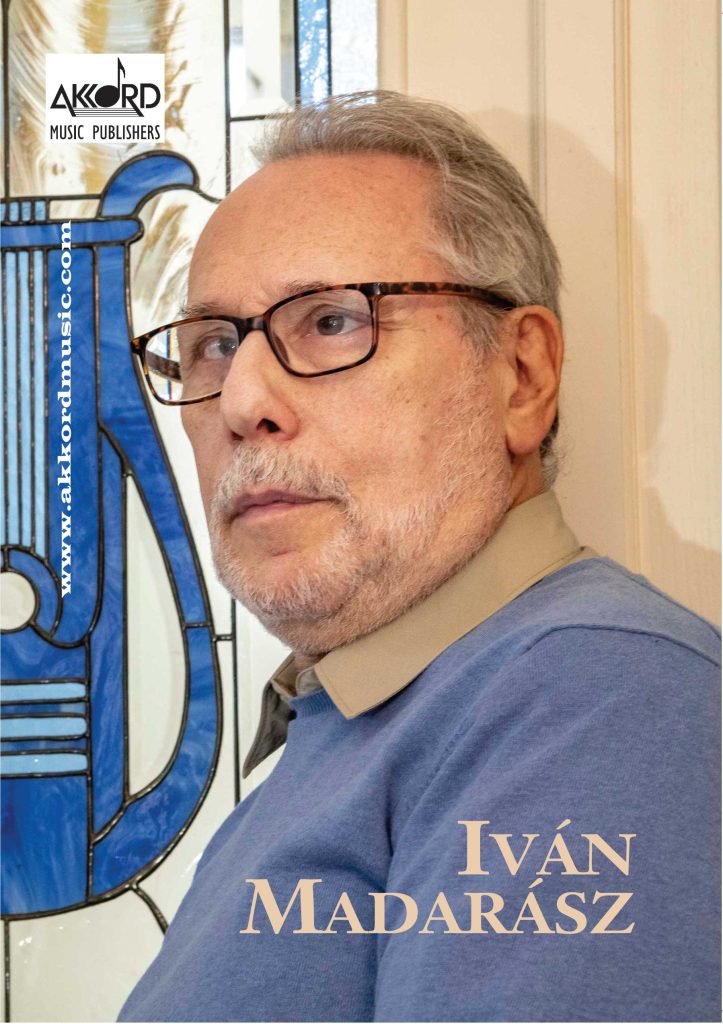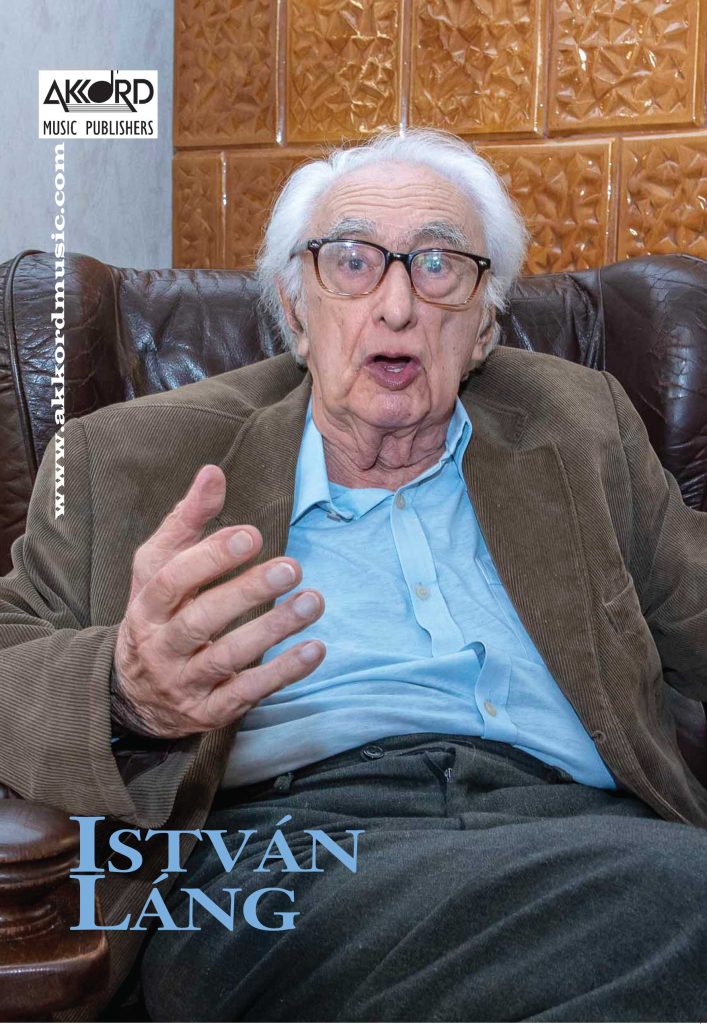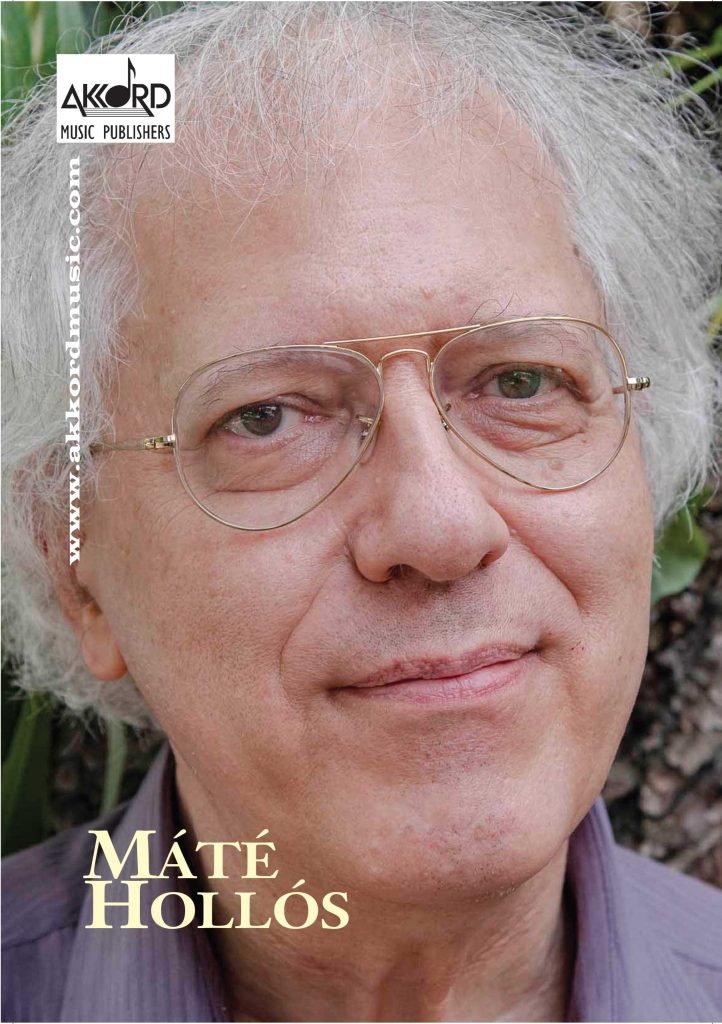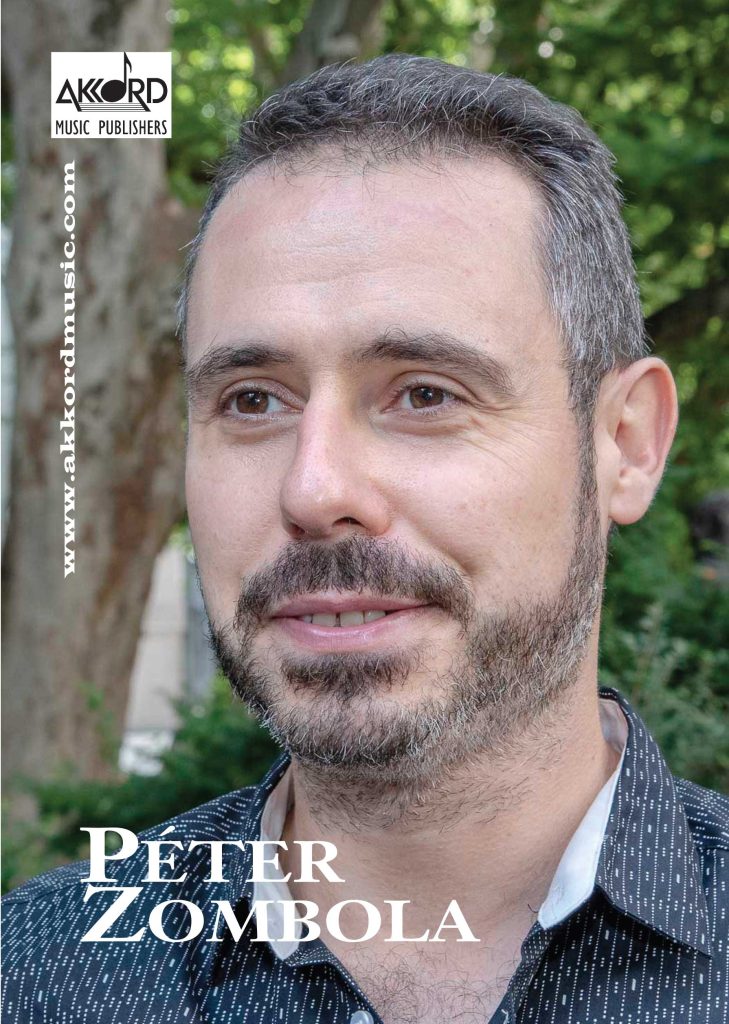 View Large
View Large
Miklós Sugár (b. 1952) studied conducting (1974–1978) and composition (1975–1980) at the Liszt Academy Budapest, in the class of András Kórodi and Emil Petrovics. He conducted the Orchestra of the Honvéd Art Ensemble between 1978 and 1984, the Békéscsaba Symphonic Orchestra between 1984 and 1988, and the Alba Regia Symphonic Orchestra between 1991 and 1999. From 1978 to 1991 he taught classes at the University of Theatre and Film Arts. He was a member of and between 1983 and 1987 was secretary of the Young Composers’ Group of the Association of Hungarian Musicians. Between 1988 and 1990 he worked as editor at the Department of Music of the Hungarian Radio, from 1991 he worked at the Hungarian National Philharmonic. He founded the EAR Ensemble in the same year. In 1985 he was awarded third prize in the international composers’ competition organized as part of the Budapest Spring Festival, and the special prize of the 1989 “Guido d’Arezzo” International Composition Contest. He was given KÓTA’s prize for his work Gloria at the competition organized by the Hungarian Radio in 1991 and was awarded third prize of the electro-acoustic composition contest of the John von Neumann Society in the same year. In 1991 and 1992, he received a scholarship from the Soros Foundation. He received the Erkel Prize in 1992, and the award of the Lánczos–Szekfű Foundation in 1993. Since 1992, he has been awarded the Artisjus Prize fourteen times as an individual and together with the EAR Ensemble, and was the recipient of the Artisjus Prize for best classical composition of the year 2020. In 2001, he received the Vox Electronica Prize together with EAR, and was awarded the Bartók–Pásztory Award in 2010. Pieces for woodwind solo
Akkord Music has published altogether four of Sugár’s pieces for solo flute in two publications. Luxatio (1989) fully exploits the modern technical possibilities of the instrument. The importance of multiphonics is indicated by the three-page table of double-stops, and the summary of other techniques – singing into the instrument, percussive key effects and air sounds – is included in Hungarian and English in the two-page legend. If all this were not enough for an impulsive performance piece that presents the flute in all its versatility, the performer will need more than one instrument during the piece: the alto flute and the piccolo are also present in this virtuosic and technically challenging piece. The other three solo pieces, composed for Gergely Matuz, pose less complex, but no less exciting musical questions. With its quickly changing, colourful characters, Greg (2014) puts the performer’s fantasy and theatrical expression to the test. 3’13” is essentially a perpetuum mobile in Presto tempo that is to be played exactly under the given time period to the second. Second flowering (2015) calls back some of the motifs from Greg in a varied and further developed form. The six-movement series Duos for Flute (2007) bears a dedication to Gergely and István Matuz. The virtuosic technical turns are paired with inventive utilization of modern techniques of sounding the instrument. The realization of the multiphonics is once again aided by a chart found on the last page of the publication, and the third movement (Moderato) requires both players to switch to alto flutes. Chamber music for woodwinds and piano
As a result of the “persuasion” of Gergely Matuz, Persuasion (2013) was born, which contains four striking, fast character pieces. The different movements explore the different possibilities of the relationship between the voices, using a complementary or imitation technique at times, moving in chord progressions at others. One-minute Movements (2010), containing a series of four short pieces, for trombone and piano, also shows a similar structure. Composed for clarinet and piano in 2017, Double Play also falls in line with this series of compositions. The piece is made up of five easily discernible parts which primarily interact through contrasting effects. As the composer writes in the afterword published with the score: “My primary goal is to provide something that is good to play and good to listen to for both performers and audience.” Spring Letter (2015), written for bassoonist György Lakatos, follows a similar concept. In the first two movements interesting and novel instrumental techniques make appearances: in the first movement, the instrument is sounded with noise instead of musical tones; in the second movement, the notes of the bassoon must be played onto the strings of the piano, inducing resonance with the airflow. Chromatic passages play the main role in the third movement, the finale closes the series of miniatures with exciting rhythms composed of eights.

Out of the string instrument family, a piece of similar character and structure was composed for the violin in 2018, with the title Interconnections. Chamber music for woodwinds and other instruments Among the works for a larger assortment of woodwinds is Two Daffodils – Hommage à Bartók (2006) written for two clarinets and bassoon and dedicated to Trio Lignum. Despite having five movements, the piece does not allude to the Bartókian bridge form. Its movements (Moderato, Preciso, Vivace, Con anima, Allegro) are miniatures utilizing modern instrumental techniques. In the finale, aleatory technique also plays an important role, as the motifs in parentheses may be repeated freely in the given tempo. Chorea (1984) was written for clarinet, cello, and piano, as well as synthesizer – the last two are to be played by the same person. The first section (Energico, ritmico), dominated by evenly repeated eights, is followed by fantasy-like, freely structured measures (Tempo libero), where a defining change in tone colour is also present as the piano switches to synthesizer. After this part, the repetitive motif starts to creep back into the musical texture, while the frequent change between

the two keyboard instruments, often in the span of two measures, causes a playful interaction between different colours. Similarly written for the trio of clarinet, cello and piano, Réminiscences (1984) consists of three movements. The material of its opening movement is dominated by arpeggiated chords playing with macabre colours, complemented by the comments of the clarinet and cello. In the second movement, the emphasis is shifted to rather static, meditative patches of sound, and in the finale, repetition plays the main role. In all three movements, the short-winded motivic fragments express the animation of recalling old memories.
Chamber music for brass
Two chamber pieces for brass have been published by Akkord. Composed for the Corpus Quartet, for four trombones, the five short movements of Musica a quattro (2009) require exceptional chamber music experience and a very compatible group of musicians due to the complicated texture. A similarly high level of chamber music performance is required by the six short movements of Brass Characters (2009), composed for the Ewald Quartet. The length of both series is just under ten minutes each, the movements are succinct miniatures, where the quick change between characters is the central element of an authentic interpretation.
Vocal works and other instruments
The first piece (O quam admirabile) of Two Latin Hymn-fragments (2007) presents a translucently ethereal texture of the sounds of the flute, violin, and piano. The denser texture of second movement (Amor est vita omnium) is as if it was expressing the all-pervasive nature of divine love with its musical notes. Composed for four guitars, Quadriga (2012) evokes the ancient Roman four-horse chariot with its title; in terms of its music it is a series of five character pieces containing etude-like elements. In advanced level classes, it is an enjoyable chamber music piece for performers and audience alike.
Written by Viktória Ozsvárt,
translated by Péter Ittzés




